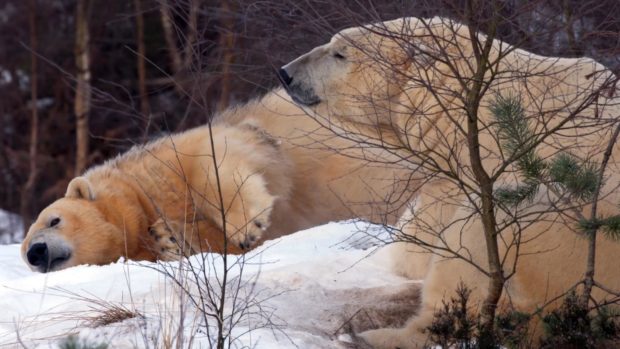Valentine’s Day has come early for the north’s resident polar bears.
Arktos and Victoria – the parents of Hamish – have been brought together by keepers at the Highland Wildlife Park.
New footage released by park owners the Royal Zoological Society of Scotland has shown the pair getting cosy in the snow.
It is hoped they might produce a brother or sister for Hamish, who recently moved to a zoo in Yorkshire.
Less romantically, the latest move has been recommended by the European Endangered Species Breeding Programme.
In 2017, Scotland’s only female polar bear Victoria gave birth to Hamish, the first polar bear born in the UK for 25-years.
Park owners say they remain encouraged and optimistic for the patter of little polar bear paws in the near future.
David Field, RZSS chief executive, said, “A critical part of our role as a wildlife conservation charity is education and all the animals in our parks are incredible ambassadors for their relatives in the wild.
“After Hamish was born in 2017, he made a tremendous impression on the thousands of people who visited Highland Wildlife Park, and the billions who saw the news around the world.
“New arrivals really help us to highlight the threats that many animals are facing in the wild and the small changes everyone can undertake to make a big difference.”
Hamish became the star studded attraction at the Kincraig park, bringing thousands of visitors to the park each year.
Last year, the conservation charity announced the young polar bear cub would be embarking on a new chapter, leaving his home in the Highlands bound for Yorkshire.
In October, keepers separated Hamish from his mother Victoria before moving him to his new home at Yorkshire Wildlife Park’s Project Polar habitat.
Mr Field says a new addition to the park would generate a significant boost in tourism for the region.
He added: “Having another polar bear cub would be a fantastic experience for mum Victoria, a boost for tourism in the local area and an opportunity to inspire even more people to take action to protect wildlife around the world.”
The latest development in the breeding programme arises amidst the park’s temporary closure amidst the pandemic.
Park operators made the “difficult decision” to close the park to visitors in January in light of the new stringent measures imposed by the government.
The charity said a further reduction in footfall would have made it no longer viable for them to remain in operation.
